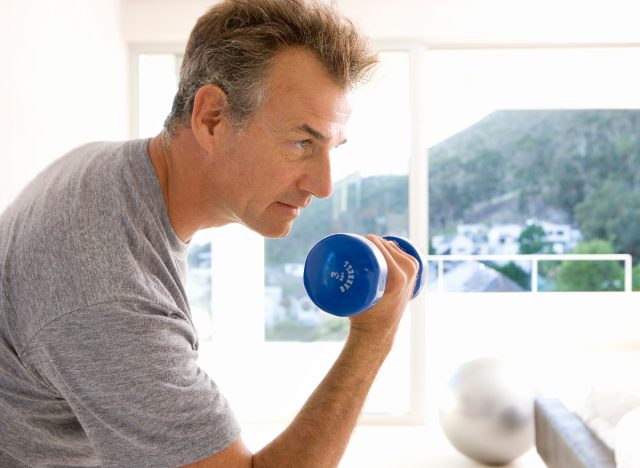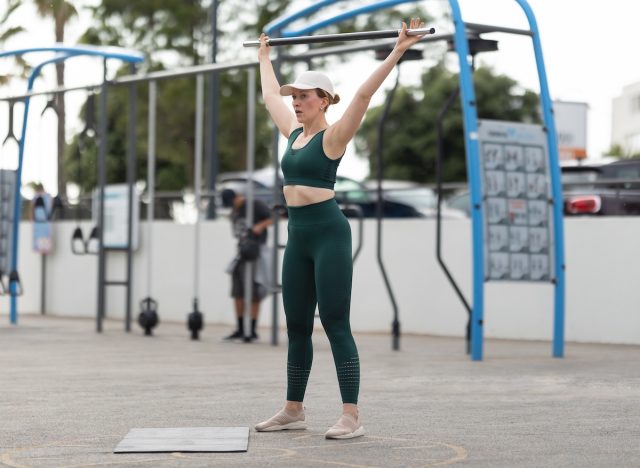Have you ever wondered how long you should work to get the most bang for your buck? If so, join the club. There is no one-size-fits-all approach to your health and fitness, and understanding how different exercise sessions affect your body can make or break your fitness goals. To get expert guidance on how long you should act for best results, we spoke to Kyrie Furr, CPT, a certified personal trainer and performance coach with Barbend, who shares expert wisdom on how long you need to work out for optimal results, no matter what your fitness goals. Whether you prefer strength training, cardio, high-intensity interval training (HIIT), or low-impact activities, we’ll help you figure out how long you need to work out to get the results you’re looking for.
According to the Centers for Disease Control and Prevention (CDC), more than 60% of adults in the United States do not get the recommended amount of physical activity. Busy schedules and lack of free time can be common culprits to blame. Sound familiar? If so, you may want to revisit your exercise routine. Doing so can help you create efficiencies to deliver the same results without the extra time. Whether you’re a busy professional or looking to optimize your fitness routine, these expert insights can help you maximize your workouts.
Read on to know more. Then, when you’re done, check out the 10 best exercises to stay fit when you’re short on time.
How long should you work for the best results?

While individual preferences and goals can vary widely, the CDC Physical Activity Guidelines for Americans It is recommended to do at least 150 minutes of moderate intensity exercise or 75 minutes of vigorous exercise each week. This amount equates to roughly 30 minutes a day, five times a week, providing a balanced approach with overall health recommendations.
“When it comes to exercising and finding a time domain, there is no one-size-fits-all answer. However, some general guidelines and individual factors can help you determine the optimal duration for your workouts,” Furr explains. “Individual factors such as fitness level, goals, and time availability must be considered when determining the optimal duration of your workouts. Finding a sustainable routine that fits your lifestyle and allows for long-term adherence is essential.”
These are the optimal durations for different types of exercise.

30 to 60 minutes of moderate-intensity activity is often recommended for cardio exercise, such as walking, running, bicycling, and rowing. At the same time, high-intensity interval training (HIIT) sessions can be effective in short bursts, usually in the 15- to 30-minute range. Strength training sessions can last anywhere from 45 minutes to an hour.
“The optimal duration for different exercises can vary and depends on the individual’s fitness level,” says Furr. “At least 150 minutes of moderate-intensity exercise per week is recommended for aerobic exercise, such as running or cycling. Strength training, on the other hand, usually requires a different approach. The American College of Sports Medicine recommends strength training. Two or three days of training exercises. The exact duration of each strength training session can vary depending on individual goals and fitness levels, but a general recommendation is to aim for 45 to 60 minutes per workout.”
Is There a “Goldilocks Zone” for Exercise Length?

Not too long, not too short, but just right. Striking this balance allows you to progress without overdoing your fitness. Aiming for consistent, manageable workout lengths that align with your fitness level and goals creates a sustainable approach to reaching your health and fitness goals.
According to Furr, “There’s a sweet spot in the ‘Goldilocks zone’ where you can achieve maximum results without overdoing it. It’s different for everyone, so it’s hard to find that sweet spot. More isn’t always better. A real problem. For example, HIIT has become increasingly popular in recent years. The HIIT method involves short, intense bouts of exercise followed by short recovery periods. This type of exercise can be completed in as little as 20 minutes. The improvements in cardiovascular fitness are similar, if not greater, relative to longer, steady-state workouts. If, it has been shown that improvements can be made.”
Does exercise duration affect weight loss and body composition?

“Exercise duration plays a role in weight loss and body composition, but it’s not the only factor,” Furr explains. “Although longer workouts burn more calories, it’s important to focus on the quality of your exercise routine. HIIT has become popular because of its ability to provide an effective workout in less time. Weight loss requires a balanced diet along with exercise. .”
Short, high-intensity sessions can contribute to burning calories during and after exercise, while longer bouts of moderate intensity also increase daily energy expenditure. The key is to be consistent and stick to a routine that works for you, regardless of intensity or length. Finding a time slot that fits your schedule and lifestyle will help ensure you can maintain a sustainable exercise routine.
#long #work #results
Image Source : www.eatthis.com
